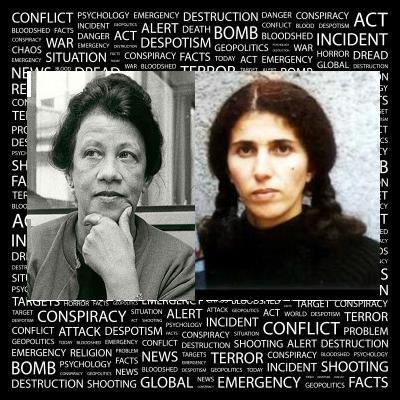Shiler Amini –
Sakine Cansiz, one of the founding members of the PKK was assassinated on 10 January 2013 in the Kurdish Information Centre in Paris, France together with Fidan Dogan and Leyla Soylemez, two political activists. The murder has sparked much speculation as to who is behind it, especially as the long stalled peace talks between the Turkish state and the PKK has just been re-opened.
Cansiz belonged to the Kurdish Alevi community, a religious community in Turkey. She joined the founding members of the PKK early on and was activefrom the establishment of the PKK in 1978 and played a major role within the movement.
Sakine Cansiz served a long prison term in the notorious Diyarbekir prison in the 1980s and saw many of her fellow party colleagues die due to torturewhile incarcerated. She was herself subjected to the gravest form of torture but managed to survive those years only to be assassinated in a European capital this week.
Many, not least the US government, noticed the role played by Sakine Cansiz, as a female activist and as one of few who had been through the key stages in the development of the PKK. In released Wikileaks cables, Cansiz is described by US officials as one two main members within the PKK who play a political key role. The cables also reveal that Sakine Cansiz is described as someone whose work must be hindered in order to put an end to many PKK activities in Europe.
 The life and political career, and the recent assassination of Sakine Cansiz is in many ways reminiscent of that of the late Dulcie September of the African National Congress, the ANC.
The life and political career, and the recent assassination of Sakine Cansiz is in many ways reminiscent of that of the late Dulcie September of the African National Congress, the ANC.
September who was a prominent ANS spokesperson was assassinated in Paris in 1988. Her murderers are yet to be found.
September left South Africa in 1973 for England where she came to establish friendships with many exiled members of the ANC.
September soon joined ANC activities and embraced ANC politics. She was as Sakine Cansiz involved in the female branch of the movement, which for September meant the ANC Women’s League. She gained a lot of recognition for her work and was appointed Chief Representative of France, Switzerland and Luxembourg in 1983 after which she resided in Paris.
What is striking in the comparison of these two political activists is both women’s roles in gaining economic support for their respective political movement as well as the recognition they received from both the female and male members of the movements.
September was assassinated outside of the ANC’s Paris office on 29 March 1988. She had been shot several times with a rifle. She was 42 at the time of her assassination.
As with sakine Cansiz, September’s assassination generated much speculation as to who had ordered the murder. Theories ranged from hit-mensent by the Apartheid regime, to French security agents aiding the same regime.
The Truth and Reconciliation Commission, the TRC, that was established following the fall of the Apartheid regime did receive information by a former police officer that a French mercenary had been involved in September’s murder. However, officially, no assassin was ever found.

